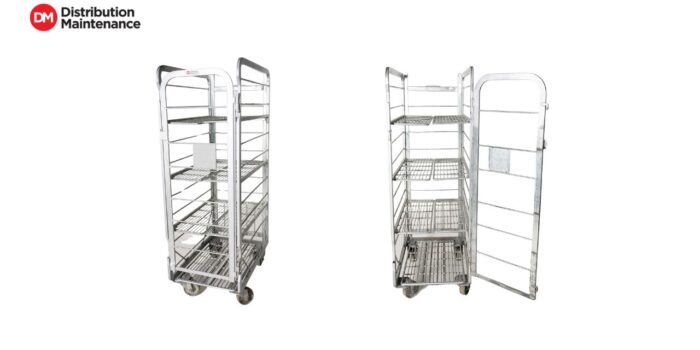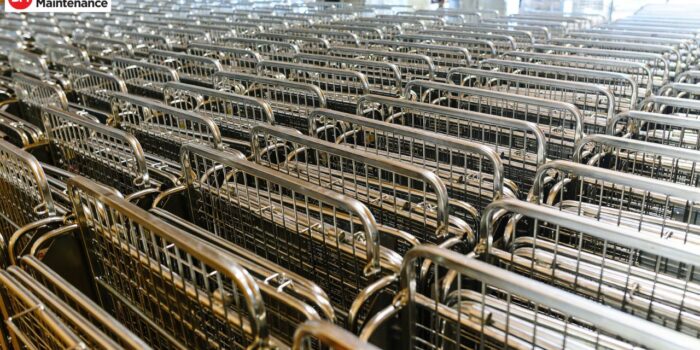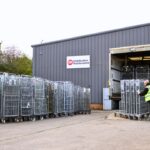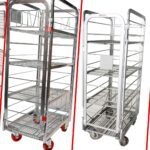Milk Trolleys: Efficient Solutions for Milk Transportation
The dairy industry relies on the smooth and efficient transportation of milk from processing plants to retailers. Milk is a perishable commodity, so timely and careful handling is crucial to maintain its quality and ensure it reaches consumers in optimal condition. Inefficient transportation can lead to delays, damage, and increased costs, impacting both the dairy supplier and the retailer. This is where Milk Trolleys, also known as Milk Tets, play a vital role. These specialised milk trolleys are designed to streamline the movement of milk containers, improving efficiency, and reducing the risks associated with manual handling. This blog post will explore the benefits of dairy carts, different types available, and how they contribute to a more effective dairy supply chain.
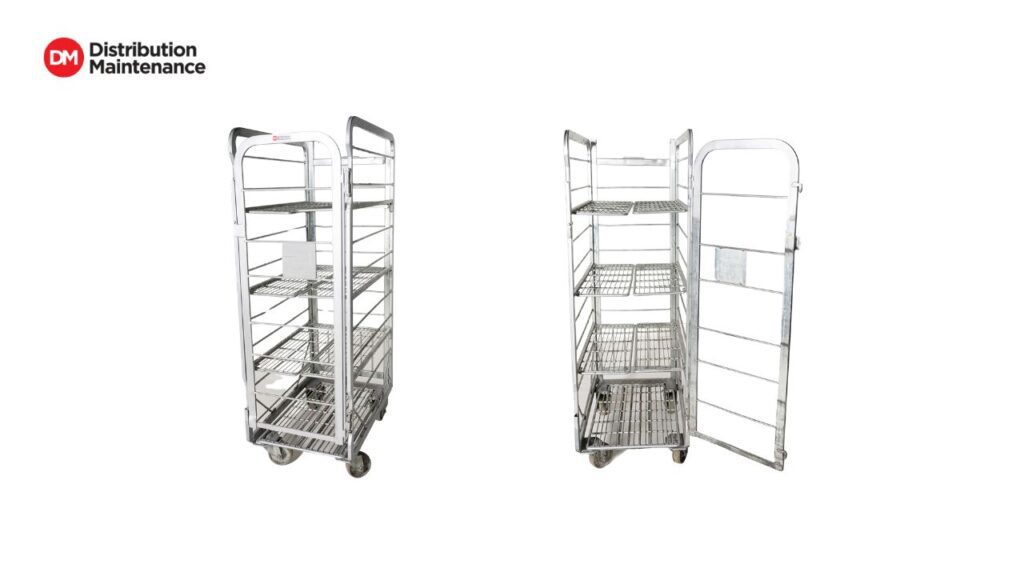
Understanding the Challenges of Milk Transportation
Moving large quantities of milk presents several challenges:
● Weight and Volume: Milk containers, whether bottles or crates, can be heavy and bulky, making manual handling strenuous and time-consuming.
● Fragility: Milk containers can be susceptible to damage if not handled carefully, leading to spills and product loss.
● Hygiene: Maintaining hygiene is essential in the dairy industry to prevent contamination. Equipment must be easy to clean and sanitise.
● Time Sensitivity: Milk needs to be transported quickly to maintain its freshness and shelf life.
How Milk Trolleys Address These Challenges
Milk Trolleys are specifically designed to address these challenges:
● Reduced Manual Handling: Carts allow workers to move multiple containers at once, reducing the need for lifting and carrying. This minimises the risk of injuries and increases efficiency.
● Purpose-Built Design: Our Milk Trolleys feature smooth sides and surfaces, specifically engineered to prevent tearing or puncturing the newer, thinner plastic milk bottles.
● Enhanced Hygiene: Many dairy carts are constructed from materials that are easy to clean and sanitise, such as stainless steel or plastic.
● Faster Transportation: Carts enable quicker movement of milk within a facility or during delivery, helping to maintain product freshness.
Types of Milk Trolley
There are various types of dairy carts available, each designed for specific purposes:
● 4-Sided Front Loaded Milk Trolleys: These provide a durable, temperature resistant storage and transport solution, designed to work seamlessly across manual, semi and fully automated environments and transport goods throughout the entire supply chain safely.
● 2-Sided Front and Rear Loaded Milk Trolleys: These are designed and used for business and automation that requires the Milk Bottles to be loaded and unloaded from both sides if the Milk Cages.
● Dairy Specific Milk Trolleys: These are designed to meet the clients’ operational requirements; Automation could be specific and narrower / wider or shorter / taller than the generic Milk Cages. Transport methods may also be a factor, such as; Trains, Aircraft, Multi-Level HGV trailers, etc.
Key Features to Consider When Choosing Milk Trolleys
When selecting dairy carts for your business, consider the following features:
● Load Capacity: Ensure the cart can handle the weight of the milk containers you use.
● Manoeuvrability: Choose carts that are easy to push and steer, even when fully loaded.
● Durability: Select carts made from robust materials that can withstand frequent use and with internal and external welds.
● Quality: Bevelled edges, smooth welds on bases, shelves and side profiles.
● Hygiene: Opt for carts that are easy to clean and sanitise.
● Safety Features: Look for features like brakes and non-slip surfaces to enhance safety.
The Benefits of Using Milk Trolleys in Your Business
Implementing dairy cages in your operations offers numerous benefits:
● Increased Efficiency: Milk Trolleys streamline the movement of milk, reducing handling time and increasing productivity.
● Reduced Labour Costs: By minimising manual handling, Milk Trolleys can help reduce the need for additional workers.
● Improved Worker Safety: Milk Trolleys decrease the risk of lifting injuries and other workplace accidents.
● Minimised Product Damage: Milk Trolleys provide a stable and secure platform, reducing the risk of spills and damage to milk containers.
● Enhanced Hygiene: Easy-to-clean carts help maintain high hygiene standards, ensuring product safety.
● Optimised Space Utilisation: Milk Trolleys can be designed to maximise storage space, both in transit and in storage areas.
Milk Trolleys in Different Applications
Milk Cages are used in various settings:
● Dairy Processing Plants: For moving milk within the plant and loading it onto delivery vehicles.
● Distribution Centres: For efficient storage and sorting of milk before it is shipped to retailers.
● Supermarkets and Retailers: For moving milk from storage to display areas.
● Delivery Services: For transporting milk to customers’ homes or businesses.
Maintaining Your Milk Trolleys
Proper maintenance is essential to ensure the longevity and safe operation of your dairy carts:
● Regular Cleaning: Clean carts regularly to remove dirt and spills.
● Wheel Maintenance: Check wheels for wear and tear and lubricate them as needed.
● Frame Inspection and repair: Inspect the frame for any damage or signs of weakness and repair accordingly.
● Record the maintenance: To safeguard your business from negligence.
Conclusion: Milk Trolleys – Essential for a Modern Dairy Supply Chain
Milk Cage are indispensable tools for the modern dairy industry. They provide efficient, safe, and hygienic solutions for transporting milk, contributing to a more effective and sustainable supply chain. By investing in the right dairy carts and implementing proper maintenance procedures, businesses can optimise their operations and ensure the smooth delivery of this essential product.

